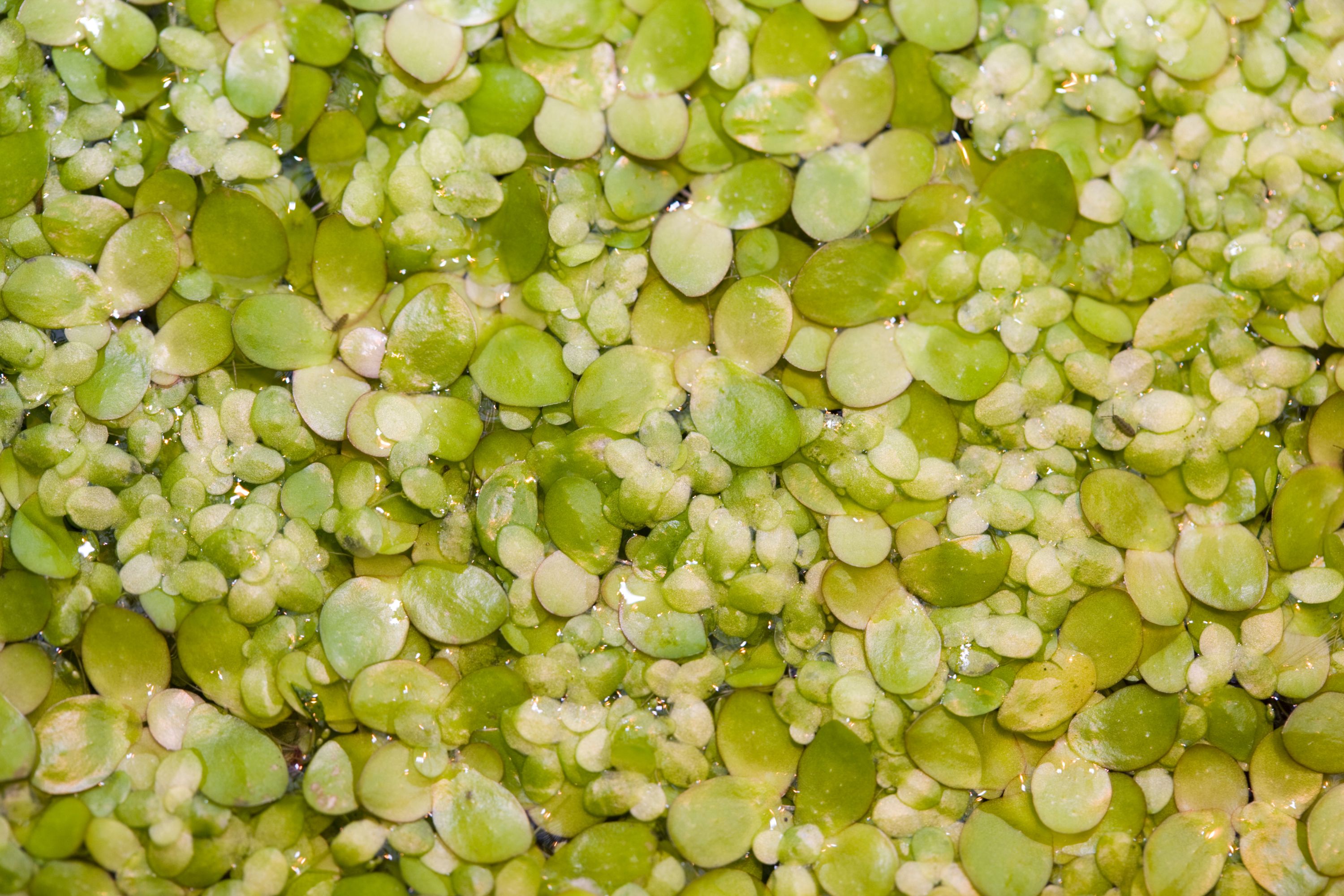Common duckmeat
(Spirodela polyrhiza)

Description
Spirodela polyrhiza (orth. var. S. polyrrhiza) is a species of duckweed known by the common names common duckmeat, greater duckweed, great duckmeat, common duckweed, and duckmeat. It can be found nearly worldwide in many types of freshwater habitat. S. polyrhiza is a perennial aquatic plant usually growing in dense colonies, forming a mat on the water surface. Each plant is a smooth, round, flat disc 0.5 to 1.0 cm wide. Its upper surface is mostly green, sometimes red, while the lower surface is dark red. It produces several minute roots and a pouch containing male and female flowers. The top part dies in the fall and the plant often overwinters as a turion. The turion sinks to the bottom of the water body and stays in a dormant phase, until water temperature reaches 15 °C. The turions then germinate on the bottom of the water body and start a new life cycle. S. polyrhiza, living in ponds and slow-moving water bodies, differs developmentally from terrestrial plants in morphology and physiology. It undergoes mainly vegetative growth in spring and summer, forming new fronds. S. polyrhiza rarely flowers. In fall and winter it switches into a dormant phase represented by the turions due to nutrition starvation and freezing temperatures. S. polyrhiza is an ideal system for biofuels, bioremediation, and carbon cycling due to its aspects of fast-growing, direct contact with media, and small genome size (~150 Mb). A comprehensive genomic study of S. polyrhiza was published in February 2014. The results provide insights into how this organism is adapted to rapid growth and an aquatic lifestyle. S. polyrhiza is found worldwide, namely in North America, Asia, more rarely in Central and South America, but also in Central Europe. It grows in tropical and temperate climates. It is not prevalent in New Zealand and only rarely in Australia. Turions were induced by the plant hormone Abscisic acid (ABA) in the lab. Researchers reported that turions were rich in anthocyanin pigmentation and had a density that submerged them in liquid media. Transmission electron microscopy of turions showed in comparison to fronds shrunken vacuoles, smaller intercellular space, and abundant starch granules surrounded by thylakoid membranes. Turions accumulated more than 60% starch in dry mass after two weeks of ABA treatment.
Taxonomic tree:







